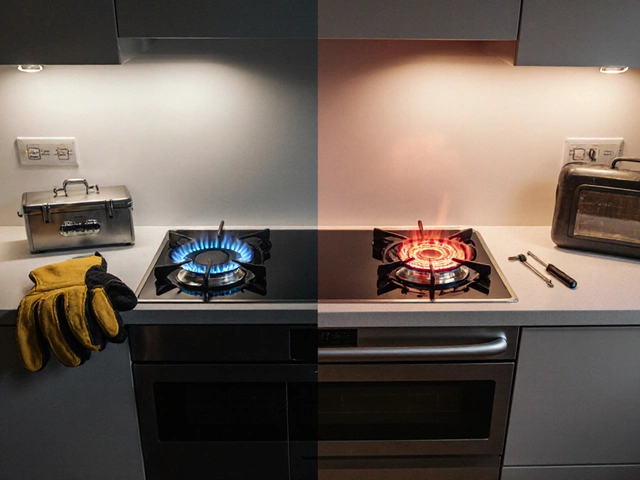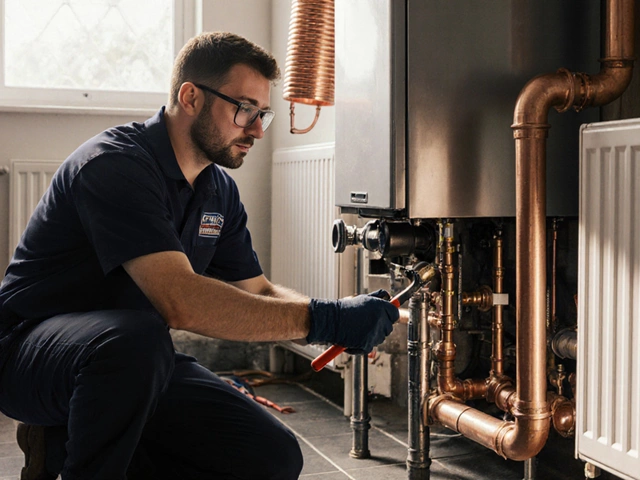Can a Cooker Be Repaired? Practical Guide to Fixing Common Issues
October 16 2025Dishwasher Replacement: When to Swap, What to Expect and How to Choose
If your dishwasher is louder than a rock concert, leaves dishes still dirty, or leaks every time you run a cycle, it’s probably time to think about a replacement. A failing dishwasher can waste water, raise your energy bill and even cause damage to your kitchen floor. Before you decide to scrap it, let’s look at the signs that a new unit will save you money and stress.
Signs Your Dishwasher Is Ready for a New Home
First off, age matters. Most dishwashers last between 8 and 12 years. If yours is older than that, parts start to wear out and efficiency drops. Next, pay attention to performance. Constant streaks, spots or a gritty film on glass means the spray arms or pump are no longer working properly. A noisy motor, rattling or grinding noises usually point to a worn bearing – and those are expensive to fix.
Leaks are a clear red flag. A puddle at the bottom of the kitchen or water seeping into cabinets means the door seal or hose has failed. Also, if you notice the dishwasher never gets hot enough, the heating element or thermostat is likely dead. Finally, frequent breakdowns – more than two major repairs in a year – signal that the machine is past its prime.
Choosing the Right Replacement: Costs, Types and Installation Tips
When you start shopping, think about what you need most. If you have a small household, a compact, energy‑efficient model can cut bills by up to 30 %. For larger families, look for a dishwasher with three racks or adjustable tines to fit big pots. Stainless‑steel interiors are tougher on dishware and dry faster, but they cost a bit more than plastic tubs.
Price ranges are wide. Basic models start around £300, while premium units with smart features can hit £800 or more. Don’t forget installation costs – a qualified engineer usually charges £80‑£120, especially if you need new plumbing or electrical work. Some retailers bundle free delivery and set‑up, so compare the total package rather than just the sticker price.
Energy rating matters for long‑term savings. A dishwasher rated A+++ uses about 20 % less electricity than an A‑rated one. Check the EU energy label; the lower the yearly kWh number, the cheaper it will run. Also, consider a model with a quick‑wash cycle if you often need dishes clean in under an hour.
If you’re handy, you can save on labour by doing the basic hook‑up yourself – just turn off the water and power, connect the inlet hose and secure the power cord. However, always test for leaks before you finish. Mistakes with gas‑linked hot water systems can be dangerous, so call a pro if you’re unsure.
Before the old unit leaves, run a final hot wash to clean out any residue. Keep the old dishwasher for parts if you’re into DIY fixes – the pump, spray arms and heating element can be salvaged for other appliances. Dispose of the old machine responsibly; many local councils offer free bulk waste pickup.
In short, replace a dishwasher when it’s old, noisy, leaking or consistently under‑performing. Pick a model that matches your kitchen size, energy goals and budget, and don’t skip professional installation if you’re not 100 % confident. With the right choice, you’ll enjoy sparkling dishes and lower utility bills for years to come.
 20 Jun
20 Jun
Dishwasher Repair or Replacement: How to Know What Your Kitchen Really Needs
Stuck between fixing or ditching your worn-out dishwasher? This article breaks down telltale signs that point to either repair or replacement, saving you money and stress. Get practical advice for spotting major issues, plus learn how age and performance play into your decision. Discover smart troubleshooting steps before calling in the pros. Keep your kitchen running smoothly with the right call for your dishwasher.
Read More...



